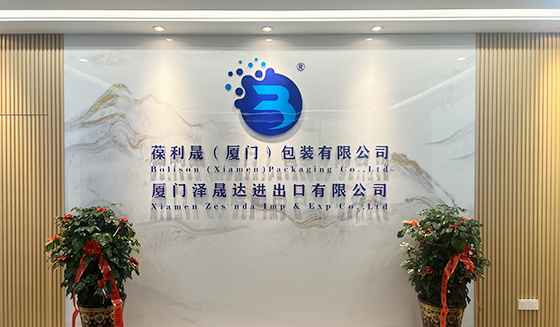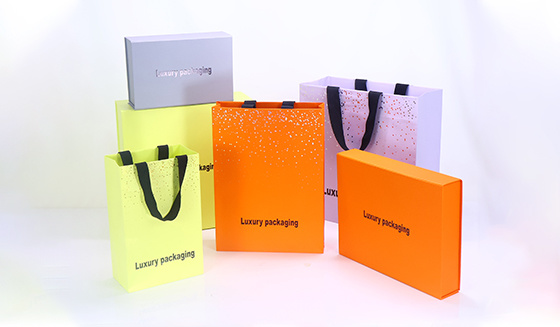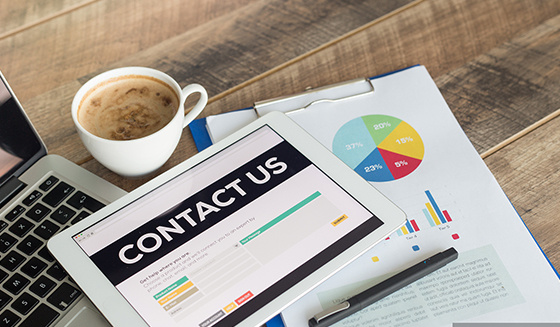06
2025
-
06
How to Choose the Right Business Packaging Boxes for Your Products
How to Choose the Right Business Packaging Boxes for Your Products Table of Contents Understanding Business Packaging: Why It Matters Different Types of Packaging Boxes Selecting the Right Material for Your Packaging Determining the Right Size and Dimensions Design Considerations for Attractive Packaging Sustainable Packaging Solutions Cost Considerations When Choosing Packaging
How to Choose the Right Business Packaging Boxes for Your Products
Table of Contents
- Understanding Business Packaging: Why It Matters
- Different Types of Packaging Boxes
- Selecting the Right Material for Your Packaging
- Determining the Right Size and Dimensions
- Design Considerations for Attractive Packaging
- Sustainable Packaging Solutions
- Cost Considerations When Choosing Packaging
- Case Studies: Successful Packaging Strategies
- Frequently Asked Questions
- Conclusion
Understanding Business Packaging: Why It Matters
Choosing the right packaging for your business is crucial. **Packaging serves multiple purposes**: it protects your products during transportation, provides essential information, and plays a major role in branding. Well-designed packaging can significantly enhance customer experience and impact purchasing decisions. When consumers encounter products on shelves or online, the packaging often forms their first impression of the brand. Hence, understanding the importance and implications of packaging is the first step in making informed choices for your business.
Different Types of Packaging Boxes
When selecting packaging boxes, it's important to recognize the various types available, each tailored to specific product needs. Some commonly used packaging options include:
1. Corrugated Boxes
**Corrugated boxes** are highly durable and ideal for shipping. Their structure provides excellent protection against external damage, making them suitable for both retail and e-commerce businesses.
2. Rigid Boxes
**Rigid boxes** are typically used for luxury products. Their sturdiness and appealing designs make them perfect for high-end items, gift packaging, and specialty products.
3. Folding Cartons
**Folding cartons** are lightweight and cost-effective, often used for food and consumer goods. They can be easily customized and are great for retail display.
4. Mailer Boxes
**Mailer boxes** are designed for easy shipping. They often feature adhesive strips for closure, making them convenient for e-commerce businesses.
5. Eco-Friendly Boxes
**Eco-friendly boxes**, made from recyclable or biodegradable materials, are increasingly popular as consumers demand sustainable options.
Selecting the Right Material for Your Packaging
The choice of material directly impacts the functionality and aesthetics of your packaging. Here are some common materials:
1. Cardboard
**Cardboard** is versatile, lightweight, and recyclable. It's a favored choice for many businesses due to its affordability and ease of printing.
2. Kraft Paper
**Kraft paper** offers a natural look and is biodegradable. It is often used for eco-friendly packaging and appeals to environmentally conscious consumers.
3. Plastic
**Plastic materials** are durable and water-resistant but pose environmental concerns. If using plastic, consider options that are recyclable or made from recycled content.
4. Metal
**Metal packaging** is perfect for items requiring protection from moisture and air. It is often used for food and beverages.
Determining the Right Size and Dimensions
Choosing the right size for your packaging box is vital. An undersized box may cause damage during shipping, while an oversized box can lead to unnecessary costs and material waste. Here's how to determine the best dimensions:
1. Measure Your Product
Start by accurately measuring the dimensions of your product, accounting for any additional protective materials like bubble wrap or padding.
2. Consider Shipping Regulations
If you are shipping items, check with carriers for size and weight regulations to avoid extra fees.
3. Allow for Branding Space
Don't forget to allocate space for branding elements like logos, product information, and barcodes, ensuring they are visible and legible.
Design Considerations for Attractive Packaging
An attractive design can enhance the appeal of your packaging and create a memorable brand experience. Here are important design tips:
1. Utilize Colors Wisely
Color plays a significant role in attracting customers. Research color psychology to choose colors that align with your brand identity and resonate with your target audience.
2. Focus on Typography
Use legible fonts that convey your brand’s personality. Ensure that the text is easy to read and complements the overall design.
3. Incorporate Unique Features
Consider incorporating unique design elements such as embossing, foil stamping, or windows that let customers glimpse the product.
4. Ensure Functionality
Your design should not only be aesthetic but also functional. Ensure that it provides easy access to the product and is convenient for the consumer.
Sustainable Packaging Solutions
As consumers become increasingly environmentally conscious, sustainable packaging is no longer optional—it's essential. Here are ways to incorporate sustainability:
1. Use Recyclable Materials
Choose packaging made from materials that can be recycled after use. This reduces waste and appeals to eco-minded consumers.
2. Reduce Packaging Size
Minimize the amount of packaging you use. Smaller packages consume fewer resources and can also lower shipping costs.
3. Consider Compostable Options
Explore compostable packaging materials that break down naturally, providing a more eco-friendly alternative to traditional plastics.
4. Educate Consumers
Include messaging on your packaging to inform customers about how to recycle or dispose of the materials responsibly.
Cost Considerations When Choosing Packaging
Budget constraints can influence packaging choices. Here are key considerations to manage costs effectively:
1. Calculate Total Costs
Consider not just the cost of materials but also printing, shipping, and storage costs. A comprehensive approach can help identify the most cost-effective solutions.
2. Bulk Orders
Ordering packaging in bulk often comes with discounts. If you anticipate consistent demand, this can be a way to reduce per-unit costs.
3. Balance Quality and Price
While it's tempting to choose the cheapest option, remember that quality packaging can enhance your brand image. Striking a balance between quality and cost is essential for long-term success.
Case Studies: Successful Packaging Strategies
Analyzing successful packaging strategies can provide valuable insights. Here are a few notable examples:
1. Apple
Apple's minimalist packaging design aligns with its brand identity, emphasizing simplicity and sophistication. The unboxing experience is a crucial part of their branding strategy.
2. Coca-Cola
Coca-Cola utilizes innovative packaging to engage consumers, including limited-edition designs that create buzz and encourage brand loyalty.
3. Warby Parker
Warby Parker's use of eco-friendly packaging not only enhances their brand image but also resonates with consumers focusing on sustainability.
Frequently Asked Questions
1. What materials are best for packaging fragile items?
Use materials with cushioning properties, such as bubble wrap or foam inserts, and opt for sturdy boxes like corrugated or rigid boxes.
2. How can I ensure my packaging is eco-friendly?
Choose recyclable, biodegradable, or compostable materials, and reduce excess packaging to minimize environmental impact.
3. What are the benefits of custom packaging?
Custom packaging enhances brand recognition, improves customer experience, and can be designed to fit specific product dimensions.
4. How do I determine the right box size for shipping?
Measure your product accurately, consider any additional protective materials, and check shipping regulations to avoid extra fees.
5. Can I incorporate sustainable practices in my existing packaging strategy?
Yes, you can gradually transition to sustainable materials, reduce packaging size, and educate consumers on proper disposal methods.
Conclusion
Choosing the right business packaging boxes for your products is a multifaceted process that requires careful consideration of materials, size, design, sustainability, and cost. By understanding the different types of packaging options available and their characteristics, businesses can select solutions that not only protect their products but also enhance their brand image. Implementing sustainable practices and showcasing innovative designs will resonate with today's eco-conscious consumers, making your packaging a significant element of your overall business strategy. With the right approach, the packaging can become a powerful tool for marketing and customer satisfaction, setting your products apart in a competitive market.
business packaging boxes






